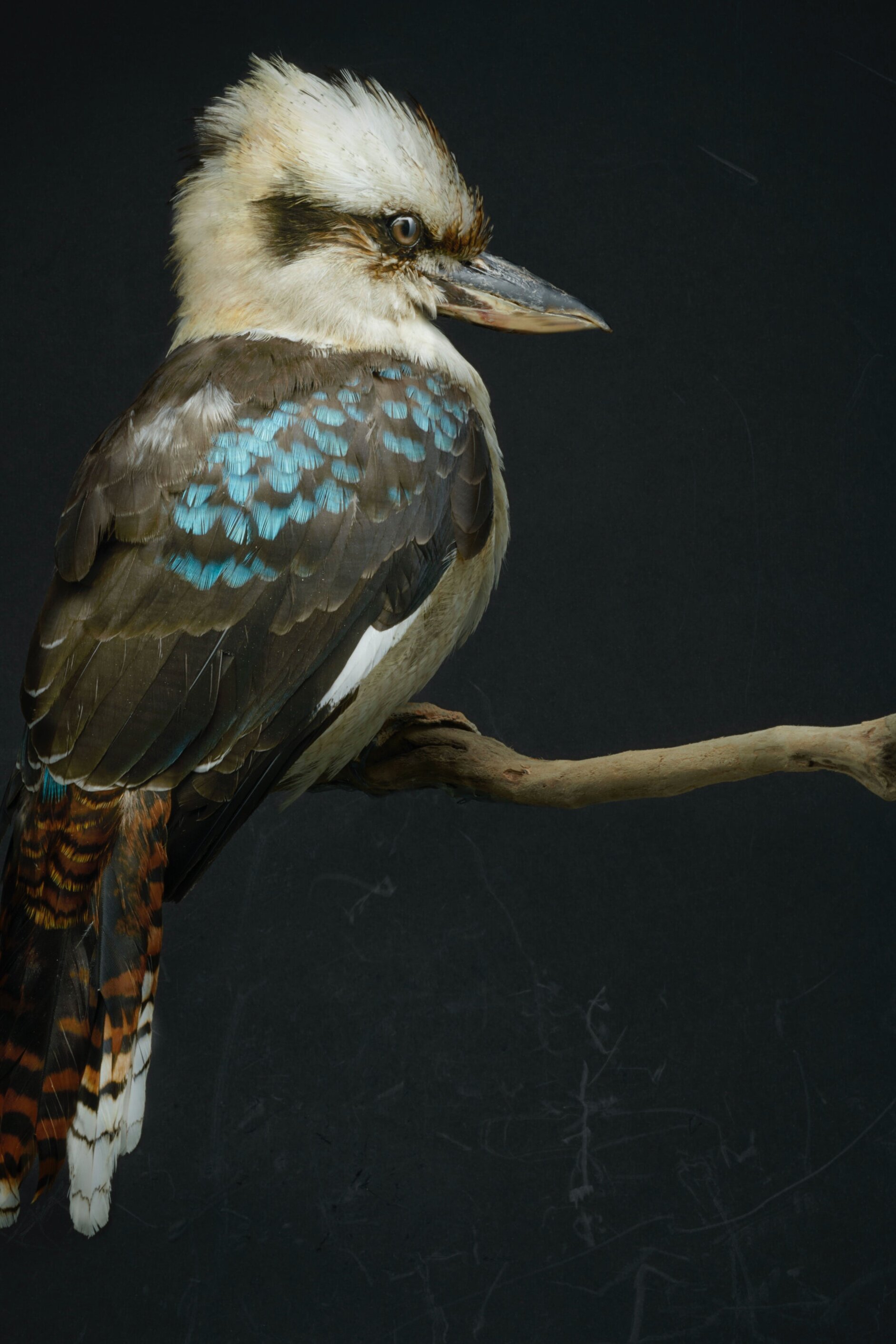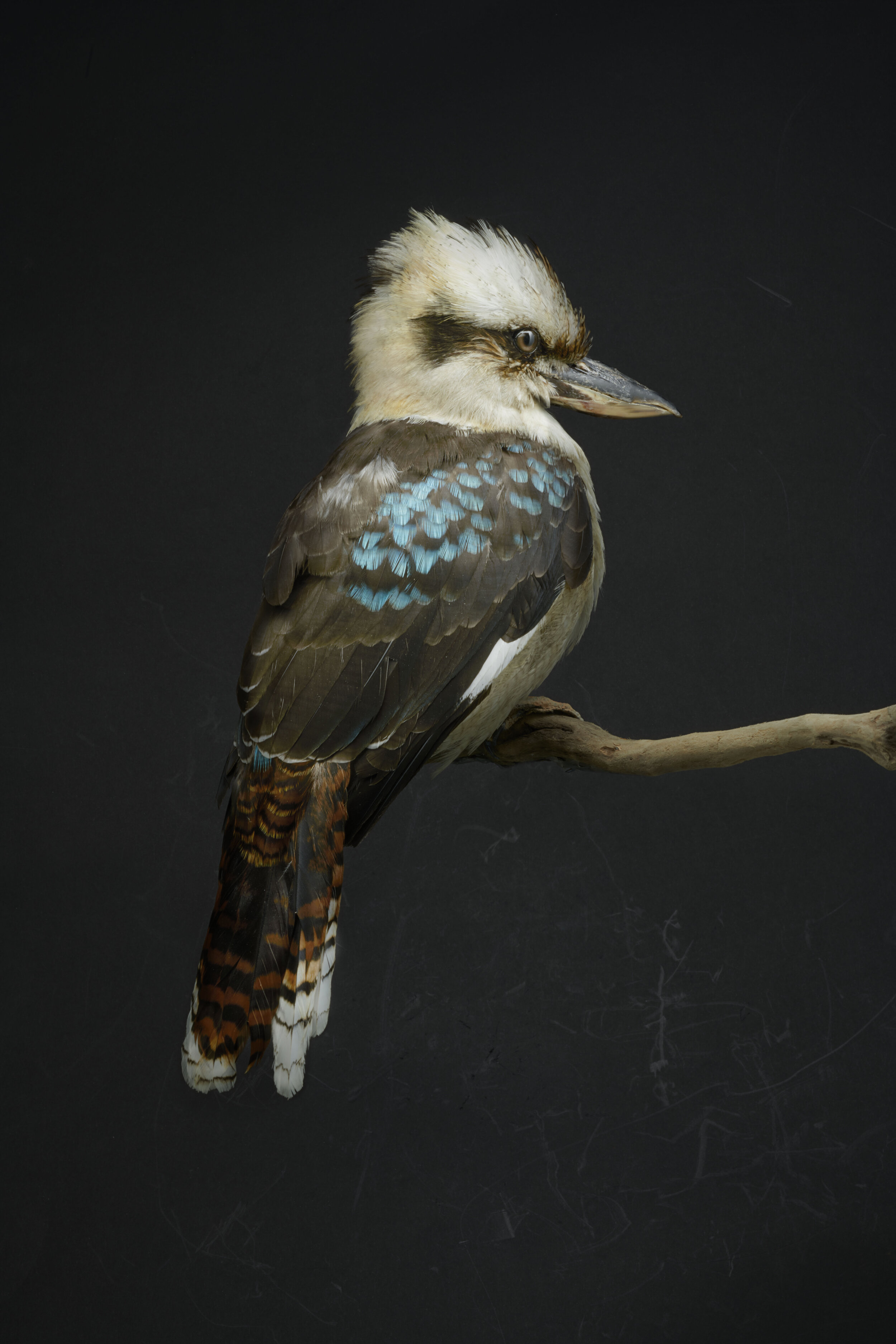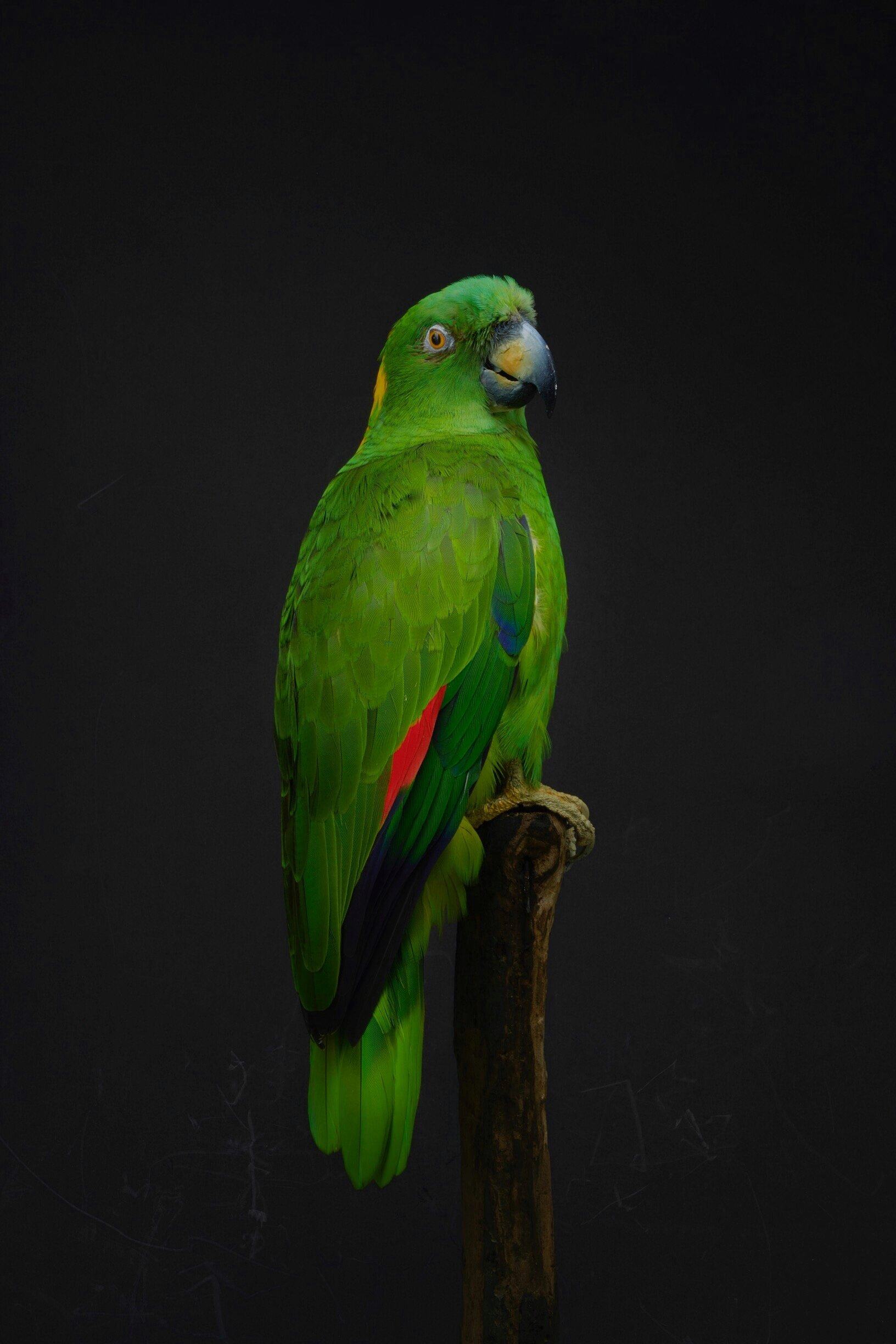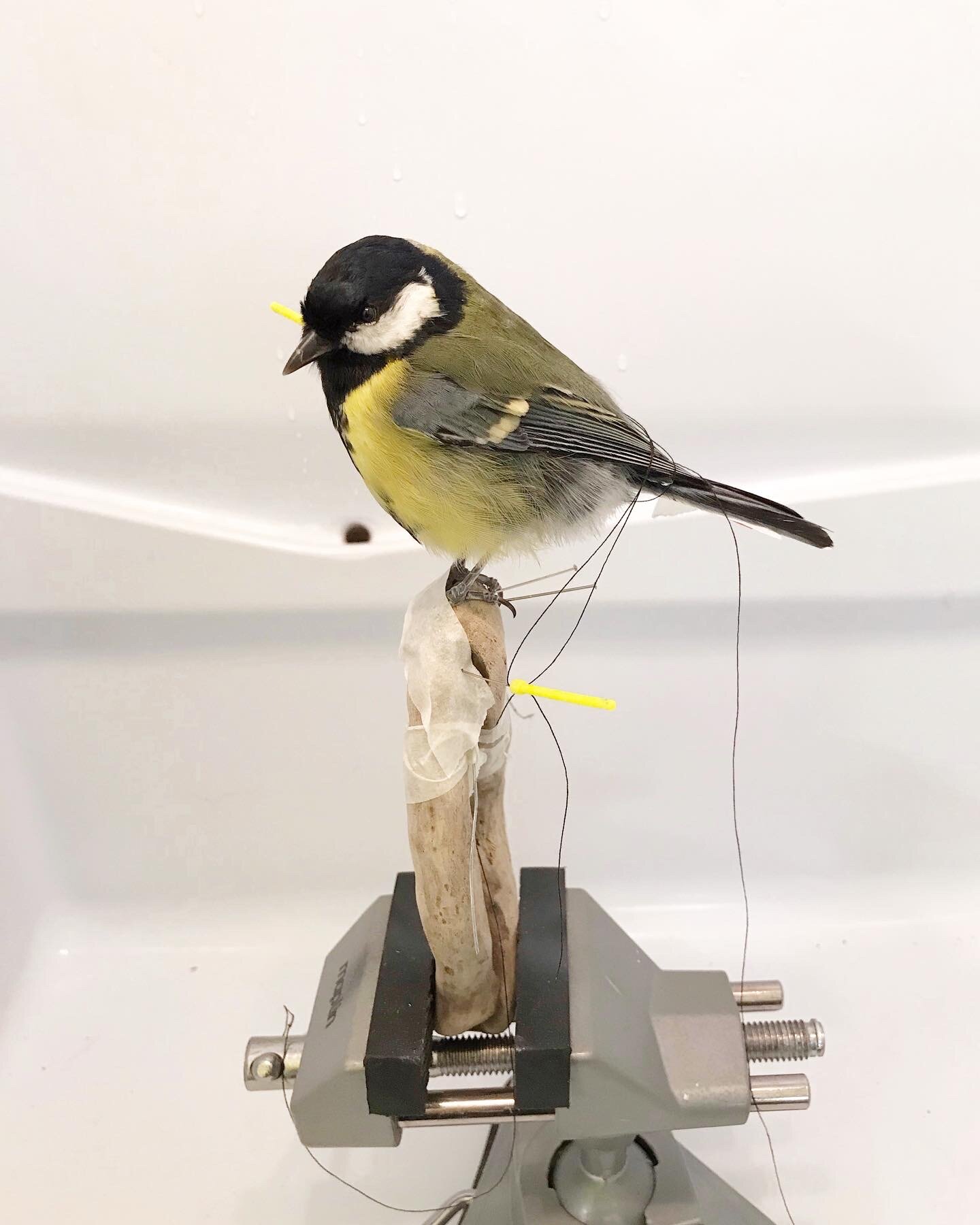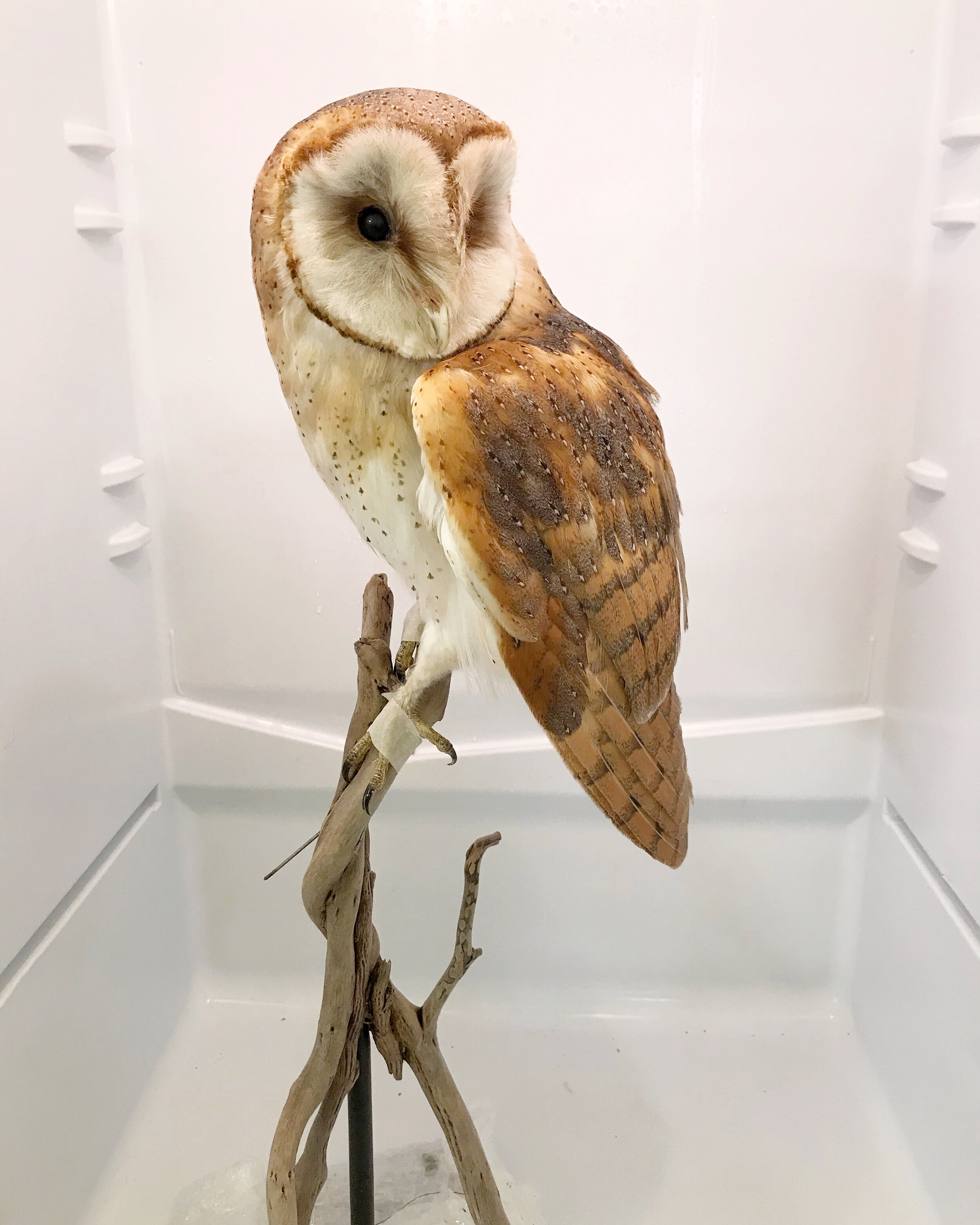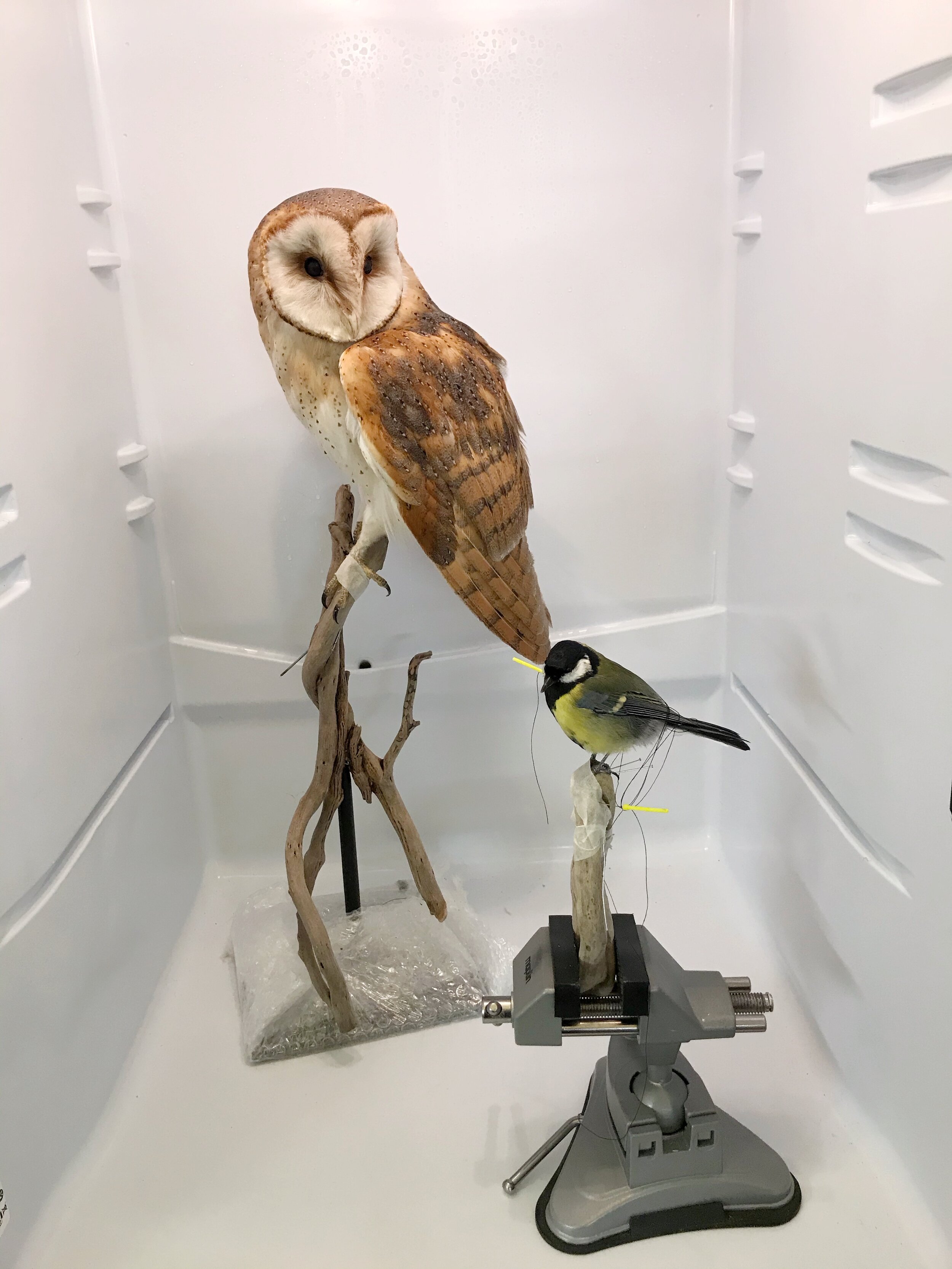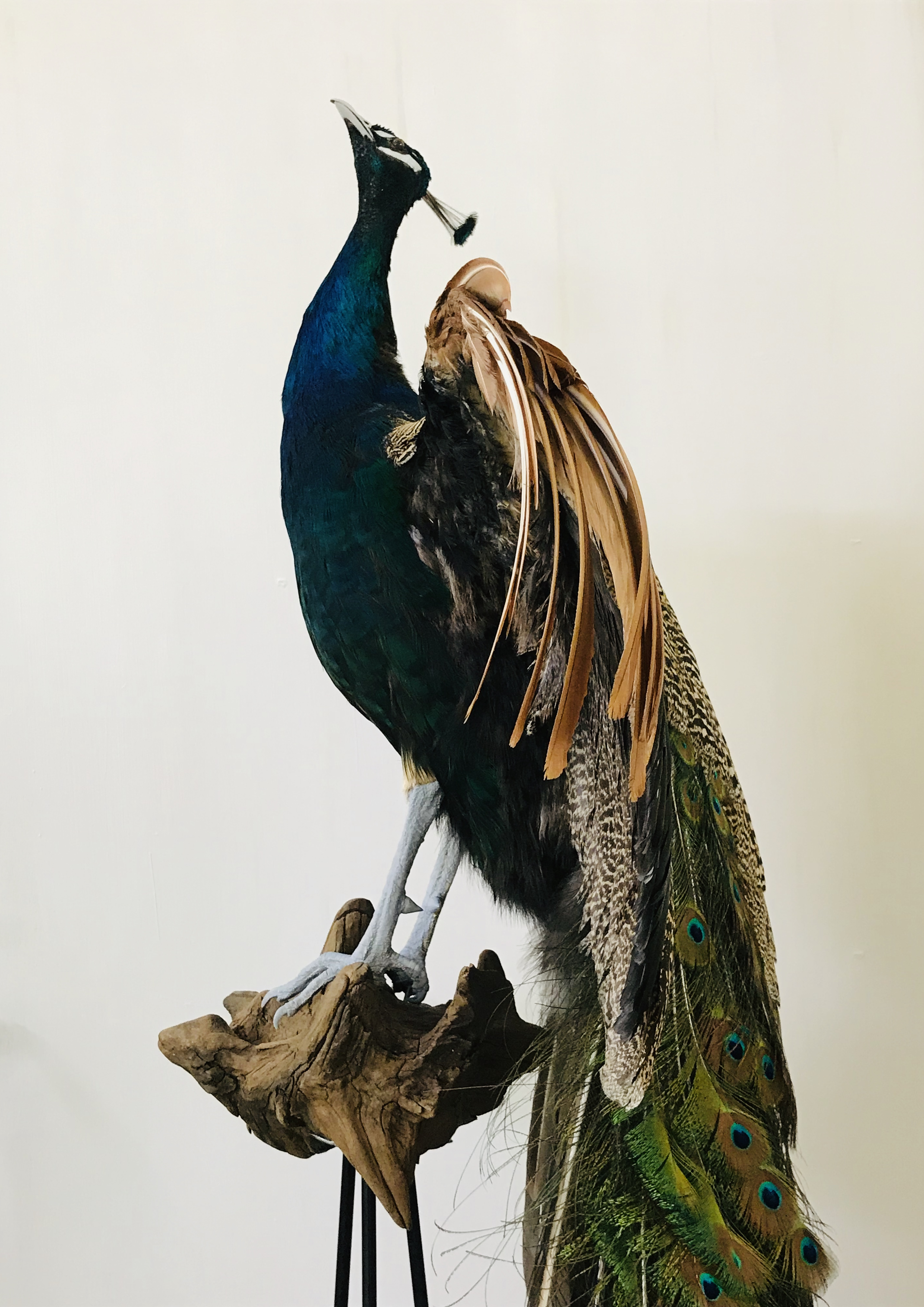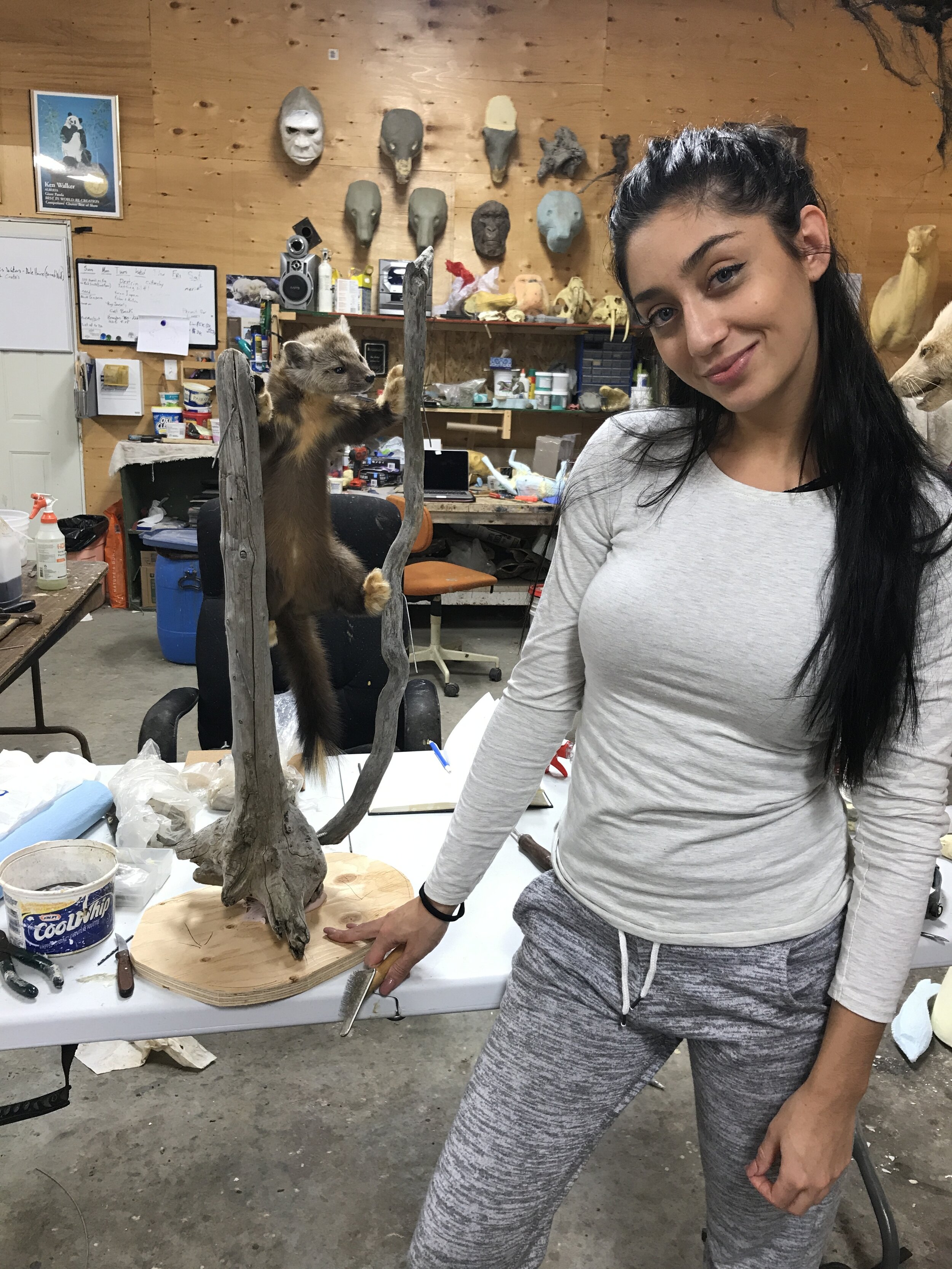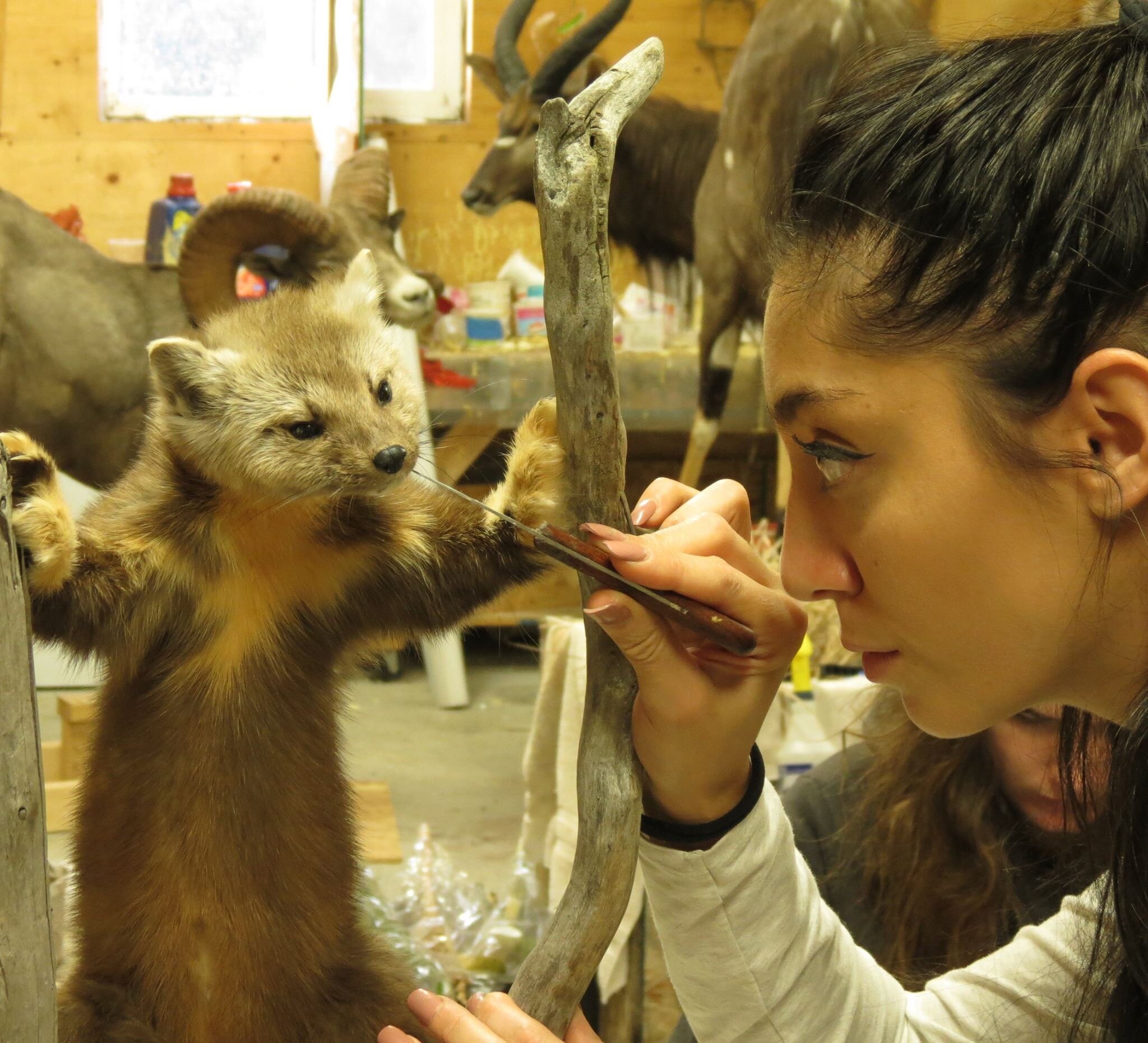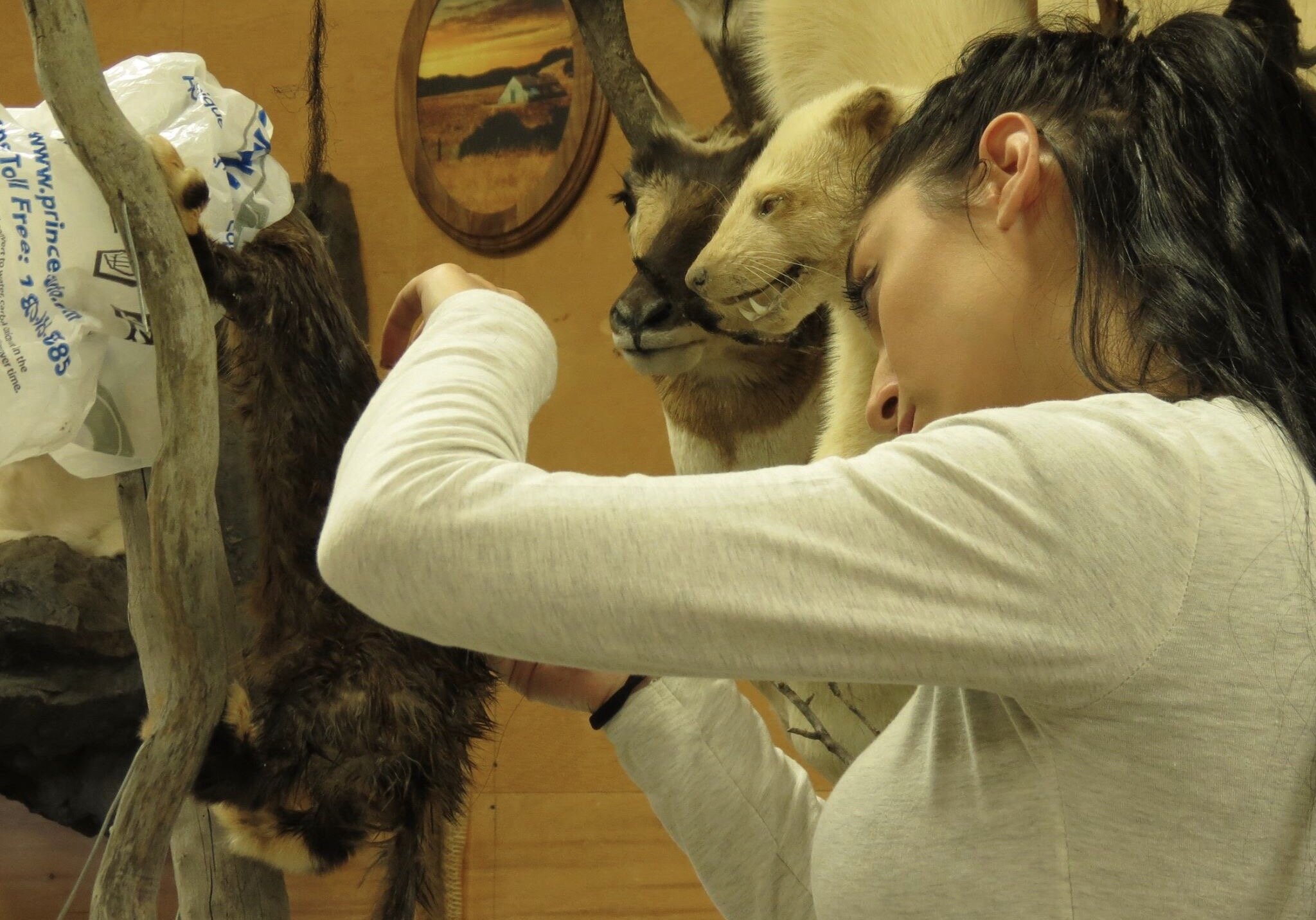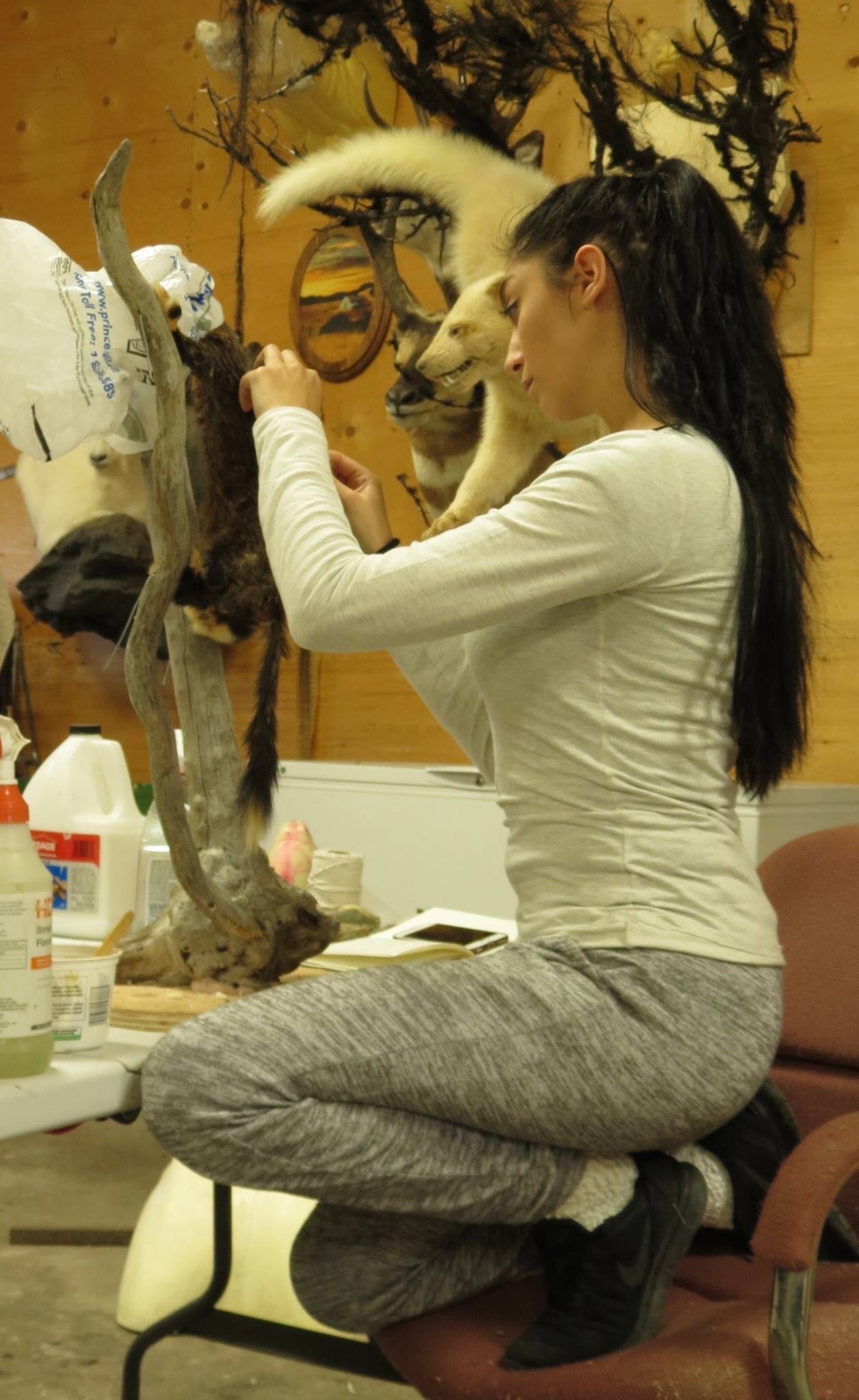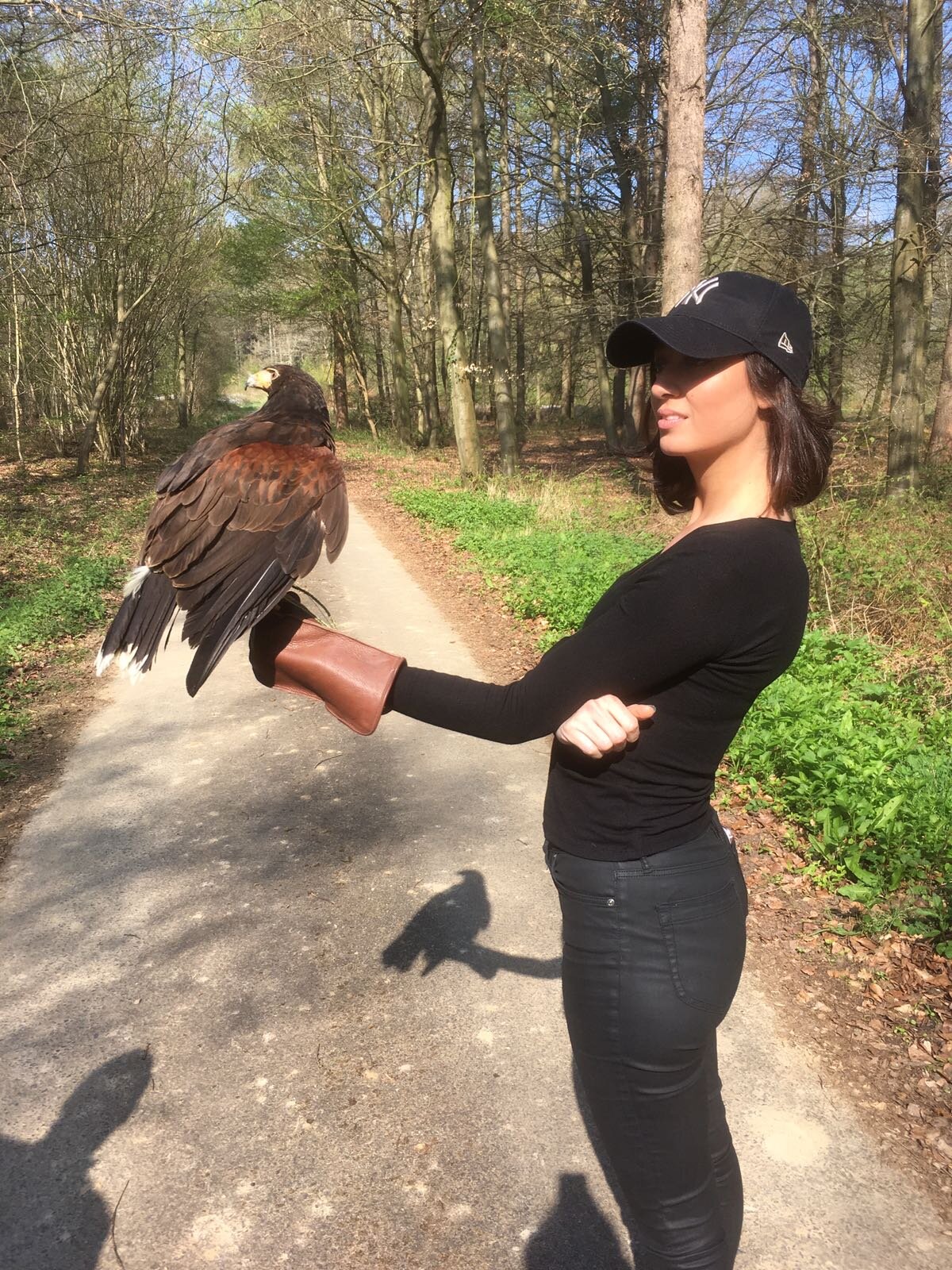Elle Kaye: Queen of the Jungle
Photo courtesy of Leo Bieber
Elle Kaye is a taxidermist who specialises birds, preserving their beauty and personality through the traditional art of taxidermy. More commonly associated with the Victorian era, we were very excited to catch up with an artist who is disrupting the field and shifting stereotypes of this art form.
How would you describe your work?
I would like to think that my work is a purist representation of the medium. It is a modern re-interpretation of a craft that has transcended centuries. I take great care to ensure that the specimen is the primary focus, making compositions that are minimalistic and clean. The specimens are so aesthetically beautiful and ethereal, I try to avoid busying the composition, so that nothing can distract from the beauty of the animal itself. I like to use natural materials that work harmoniously with the animal, to create a interpretation of the 'taxidermy diorama'. In order to bring a stigmatised practice into modern homes, the work needs to move with the times.
Where do you get your subjects from?
All of my subjects come from zoos or breeders in the United Kingdom and sometimes Europe. They die of natural causes including injury, sickness or health, or age. Sometimes I find pristine roadkill, or cat prey. A taxidermist must be able to prove the origin for all of their specimens, and log them carefully. This is to ensure you are working ethically and have obtained your specimens legally.
What inspired you to start working in the world of taxidermy, and how did you get into it?
I have always had an affinity to the natural world. Since I was a little girl I felt that I had a duty of care to animals. Whilst my friends were reading ‘Mizz’ magazine in the 90s, I had ‘Animal Hospital’ annuals and would rehearse 'operations' on my teddy bears - not in a sadistic way, but with a conscious, methodical approach to anatomy. As a fairly solitary child, I found great solace in being outdoors, I remember making travel routes for ants in the garden using jars and stones to guide them, and collecting ladybugs on sticky weed and bringing them into the house to care for as pets. I recall lying awake at night listening for owls or foxes. There were many years where I used to plead with my parents for a pet of my own, but every birthday and Christmas came around and I ended up with disappointment in my heart. Eventually we got a kitten. That was an important moment for me, because I felt as though I had achieved something on this journey with animals, I could care for this little cat. I suppose if there was any real standout moment or turning point, this would have been it, as I subsequently decided I wanted to become a vet.
I didn't grow up around taxidermy, and truthfully I didn't know that it was a profession. It was only at university when I was studying Sculpture, that things fell into place. I spent a lot of time looking at animal anatomy, and anatomical illustrations, with the intention of recreating the armature or skeletons of animals (skeleton articulation is the essence of successful animal sculpture). I had the fascination with the biology, but also with the idea of working on a tangible specimen. It was at this point that one of my tutors suggested I look at taxidermy, so I went to the library and pulled a tonne of literature on the subject. I took books on tanning hides, on study skins and museum restoration. I took books on brain tanning, and on salting skins. It was then that I tried to taxidermy and used it to inform my artistic practice for the three years at university. After I graduated, I started my own business.
Taxidermy is quite a unique art form; what makes it art?
In my opinion, in order to be a taxidermist, you must first be a sculptor. Taxidermy is a combination of processes, but one of those processes is to be a maker. If you do not have artistic projection, or the ability to rebuild in your mind, all of the pieces that become a jigsaw, cannot be put back together. I think being a sculptor and being a taxidermist are synonymous, you cannot be one without the other. In essence, that's what makes it art. There are other artistic qualities to the work though. Is there a better art than evolution?
What, if anything, do you want viewers of your work to feel/ think/ experience?
I want people to feel calm when they look at my work. We all need more reminders of the natural world, and these reminders can be very grounding. I had a client who used to sit downstairs with his wife every morning to have coffee, and they would watch a kingfisher by the stream together. She passed away, and he came to me to ask if I could mount a taxidermy kingfisher for him. The kingfisher had to stop coming since his wife had died. He said that the bird would be a reminder of his wife, something he could look at every day to remember. There is something transportive about taxidermy, if done properly. I like to think that my work will possess the quality that teddy bears had when I was a little girl. I believed that once I closed my door and turned away, they came alive. The best taxidermy possesses a transience about it, that moment between being still and moving, it's a moment in time, a snapshot.
What makes your style distinctive?
I like to think that my style is distinctive because of the way that I present the birds and my ethos around my practice. I am humbled by my job, and I am expressive with how emotive it makes me to have this 'duty of care' as I put it. I want to do justice to the animals, and I feel that making them look traditional as they would in the wild is the most respectful and dignified way. Although taxidermy is hard to have a signature, I hope that my mounts become recognizable because of this in deliberate intention and the clean, crisp lines of the work.
Who, or what, influences you?
I feel more inspired by what then who. I still find I am at my most peaceful, and my mind is the most calm when I am outdoors. I have become fairly obsessed with birds since I've started working on them, and I'm now an avid birdwatcher. When you are outdoors, not staring at your phone or the parameters of some sort of tablet, you can be more free and liberal in your mind. You don’t have to worry about what filter makes you look the thinnest. You don’t have to worry how many likes your photo got. You don’t have to worry about issues that don’t have currency in the read world. You can help to heal any mental health issues you might have. We don't stop and look up at the world often enough, and I feel the most inspired - and I hasten to add, the most mentally well - when I am looking at the natural world and what is meaningful.
What is most important to you within and around your work?
The most important thing to me about my work is that it is honest, and that it is respectful of the animals that I am using. I experience a lot of negativity, from so called ‘trolls’, who question the ethics of a taxidermist, asking if it is ethical to work on something that cannot consent. They leave me abuse on my Instagram. Because of these accusations, doing justice to the animal, making it look like an animal again, not doing anything sinister with the carcass, it's really the most important thing.
What do you hope to achieve by your work?
I hope to achieve beauty with my work, as simply as that. I would love for everybody to have taxidermy in their homes, but I do appreciate that it is not for everyone. I hope that my work opens up the dialogue about mortality, a conversation that we are not very good at. Just by doing this, it might make people think about their own preferences for death, and possibly discuss organ donation, or donation to medicine, which I think are important. I hope that my work inspires young people to want to work with animals, whether that be as a vet, falconer, a wrangler, a ranger, a marine biologist, a warden, a zookeeper, a breeder, perhaps even an archaeologist hoping to find some pathology artifacts. Maybe even inspire someone to be a taxidermist. I hope to achieve taxidermy mastery, and have my work recognized amongst the industry as being of a sculptural standard that is admired and respected by others. I know they say it takes 10 years to become a master, so I have a little way to go, but respect in the industry is very important, especially as it is quite a small industry and most of us know each other by name. I hope also, and ultimately, to obtain and achieve my legacy. Taxidermy, if done properly should last for hundreds of years, so I hope that that becomes my ultimate achievement.
What’s coming up in your calendar?
I’ll be back at The Other Art Fair this year; in the Autumn. Otherwise I work on commission, where clients can request pieces from me and I can make them bespoke compositions. Look out for the launch of my new business venture ‘Queen of the Jungle Taxidermy’ where you will be able to purchase ‘off the shelf’ pieces at all different price points, without the need for commissioning. A sort of e-commerce shop for taxidermy.
